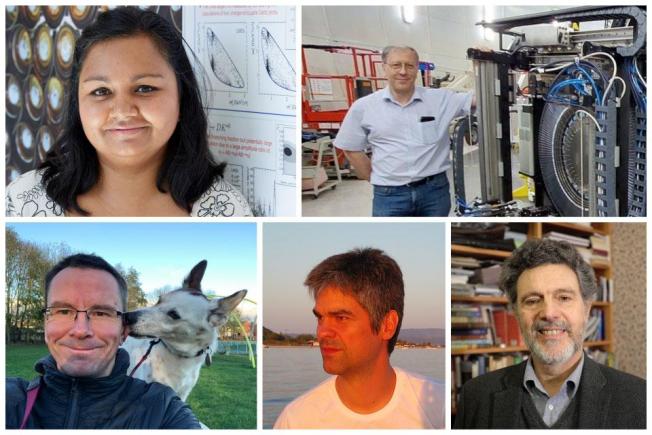The structure of intercalated water in superconducting Na$_{0.35}$CoO$_{2}\cdot$1.37D$_{2}$O: Implications for the superconducting phase diagram
ArXiv cond-mat/0403661 (2004)
Abstract:
We have used electron and neutron powder diffraction to elucidate the structural properties of superconducting \NaD. Our measurements show that our superconducting sample exhbits a number of supercells ranging from ${1/3}a^{*}$ to ${1/15}a^{*}$, but the most predominant one, observed also in the neutron data, is a double hexagonal cell with dimensions \dhx. Rietveld analysis reveals that \deut\space is inserted between CoO$_{2}$ sheets as to form a layered network of NaO$_{6}$ triangular prisms. Our model removes the need to invoke a 5K superconducting point compound and suggests that a solid solution of Na is possible within a constant amount of water $y$.Spin singlet formation in MgTi2O4: evidence of a helical dimerization pattern.
Phys Rev Lett 92:5 (2004) 056402
Abstract:
The transition-metal spinel MgTi2O4 undergoes a metal-insulator (M-I) transition on cooling below T(M-I)=260 K. A sharp reduction of the magnetic susceptibility below T(M-I) suggests the onset of a magnetic singlet state. Using high-resolution synchrotron and neutron powder diffraction, we have solved the low-temperature crystal structure of MgTi2O4, which is found to contain dimers with short Ti-Ti distances (the locations of the spin singlets) alternating with long bonds to form helices. Band structure calculations based on hybrid exchange density functional theory show that, at low temperatures, MgTi2O4 is an orbitally ordered band insulator.Scientific Reviews: GEM: The General Materials Diffractometer at ISIS-Multibank Capabilities for Studying Crystalline and Disordered Materials
Neutron News Taylor & Francis 15:1 (2004) 19-23
Pressure effects on structural and electronic properties of superconductors
HIGH-PRESSURE CRYSTALLOGRAPHY 140 (2004) 429-446



